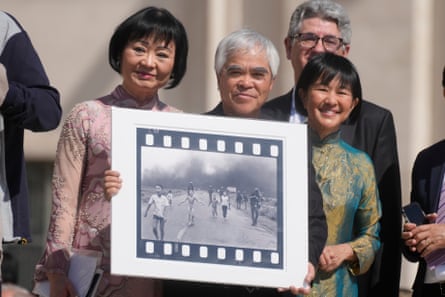The Enduring Impact of the ‘Napalm Girl’ Photo: History, Controversy, and Legacy

The photograph known worldwide as the "napalm girl" captures a powerful moment of history. Taken on June 8, 1972, it shows a terrified young girl, Phan Thi Kim Phuc, fleeing a napalm attack during the Vietnam War. This image not only became a symbol of the horrors of conflict but also sparked discussions about journalistic ethics and the power of visual storytelling.
The Story Behind the ‘Napalm Girl’ Photo
The "napalm girl" photo gained international attention for revealing the brutal realities of war. In the iconic image, nine-year-old Kim Phuc runs, naked and badly burned, among other children and soldiers. The photograph quickly circulated worldwide, bringing the Vietnam War’s devastation into living rooms across the globe.
Originally attributed to Nick Ut of the Associated Press, this image would earn him the Pulitzer Prize and World Press Photo of the Year in 1973. For decades, the authorship of the photo remained uncontested, solidifying Nick Ut’s place in photojournalism history. Yet the story behind the photograph goes beyond the frame.
Recent Controversy: Who Took the Photo?
Over fifty years later, new investigations called the authorship of the "napalm girl" photograph into question. A recent documentary suggested that Nguyen Thành Nghe, a freelance photographer and stringer for NBC, may have captured the image rather than Nick Ut. This debate led World Press Photo to suspend the official attribution while further research continues.
Despite the scrutiny, the Associated Press maintains there is "no definitive evidence" warranting a change in credit, citing multiple forensic analyses and witness interviews. The issue remains unresolved, but the significance of the image is not diminished. Major media outlets such as The Guardian and The New York Times have covered the ongoing dispute in detail, highlighting the complexities of historical documentation.
The Legacy of Kim Phuc and the Iconic Image
Regardless of credit, the "napalm girl" image endures as a powerful anti-war symbol. Kim Phuc survived and later became a UNESCO Goodwill Ambassador, dedicating her life to helping children affected by war. Her story adds further humanity and inspiration to the famous photo.
The photo also prompted discussions on the responsibilities of the media and the ethical boundaries of conflict photography. These conversations remain relevant as journalists continue to document conflicts around the world.
Conclusion: Why the ‘Napalm Girl’ Photo Still Matters
The "napalm girl" photo is more than a snapshot. It changed global perceptions of the Vietnam War, influenced public opinion, and transformed the landscape of photojournalism. Ongoing debates about the image’s authorship serve as a reminder of the importance of accuracy and recognition in media.
For more details about the ongoing legacy and the attribution dispute, you can refer to coverage by The Associated Press and The New York Times.
Today, the "napalm girl" image stands as a testament to the enduring impact of visual storytelling. Its raw emotion continues to challenge viewers, educate new generations, and inspire calls for peace.